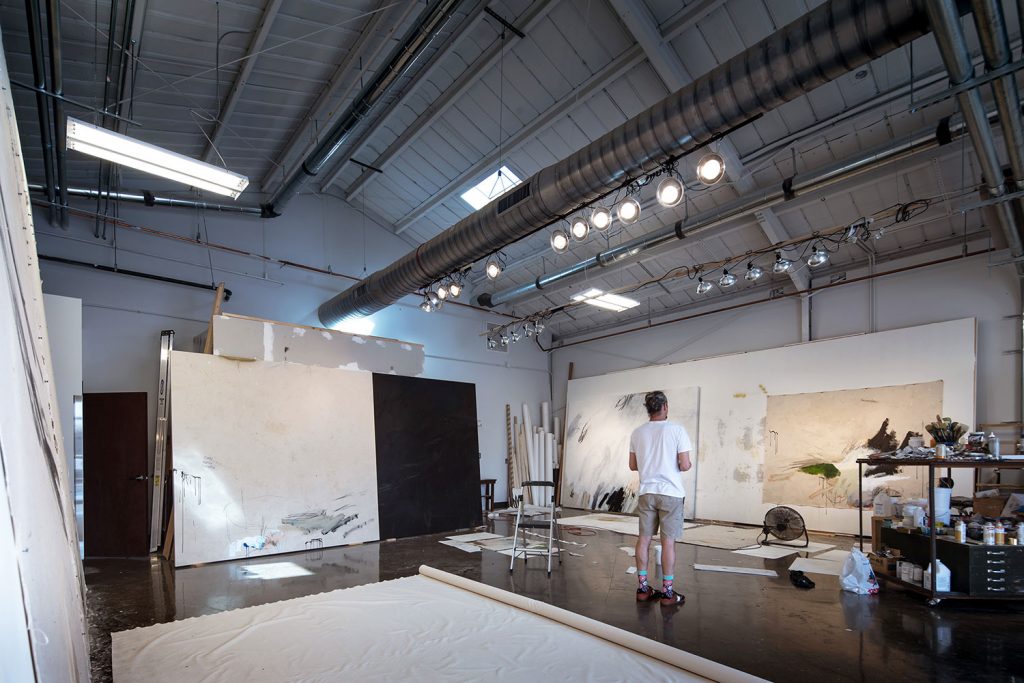Jason Craighead
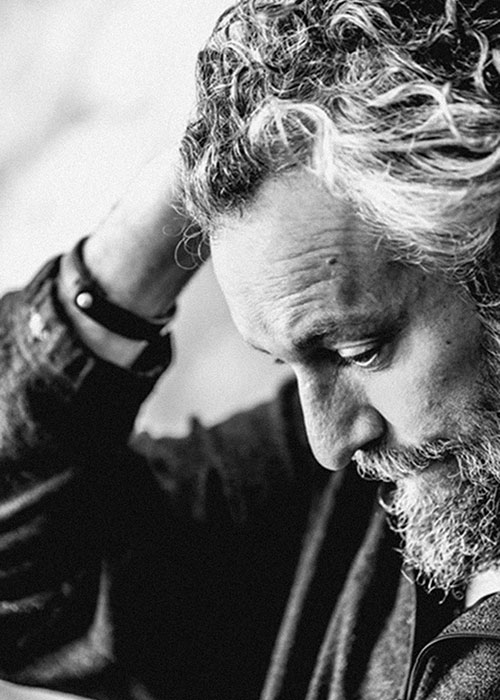
PHOTOGRAPHY BY JEFF BRAMWELL @JEFFBRAMWELL AND ART HOWARD @ARTHOWARDPHOTOGRAPHY WORDS JASON CRAIGHEAD AND DAVID BABINEAU WWW.BABINEAUDAVID.COM AND FREJ FORSBLOM MAKASIINI CONTEMPORARY @MAKASIINICONTEMPORARY PAGE 6.7 BEACH PAINTING #2 2021 PAGE 12.13 SHOOTING STARS (I AM LOVE) PAGE 15 WITHIN 2019 PAGE 20.21 DISTANCE TO LOVE PAGE 28.29 UNIVERSAL DISTANCE STARRING @JASONCRAIGHEAD WWW.JASONCRAIGHEAD.COM RALEIGH UNITED STATES
Jason Craighead’s work is, at its core, an exploration of the vastness of the human condition, both personal and collective. Craighead’s dynamic paintings and works on paper embody the artist’s recent experiences, ongoing preoccupations, and at times brutally raw emotions.
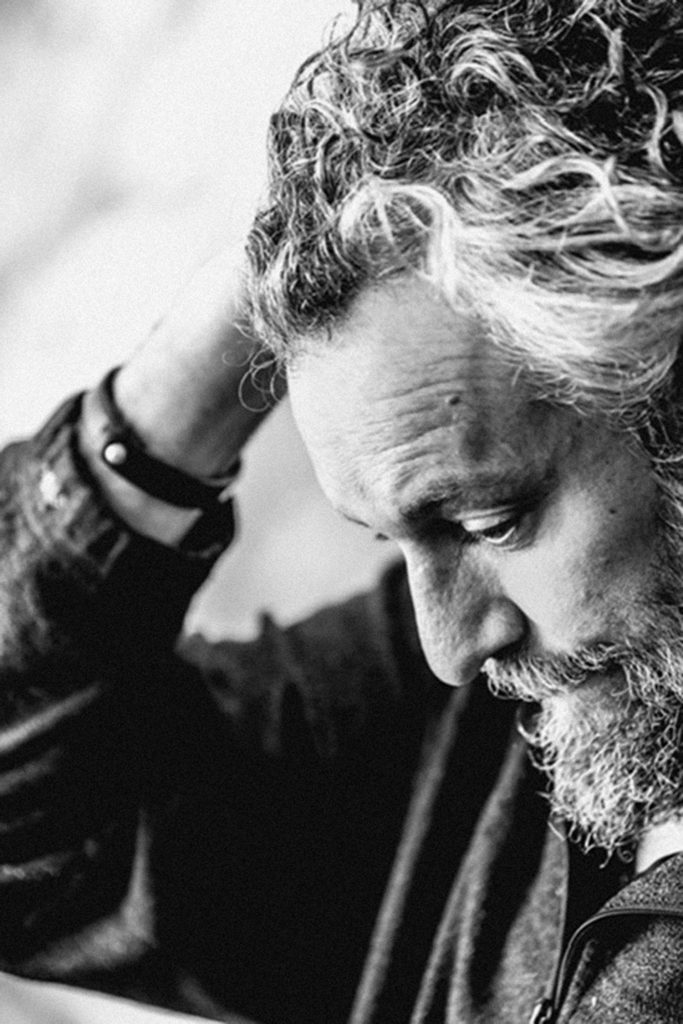
Our modern lives are entangled in a complicated world that is in turn joyful, tragic, confusing, dark, wild, and brilliant. In the artist’s work, vast areas of softly washed colour exist alongside frenetic mark making; midnight black and glowing metallic swaths of pigment delineate movement and a surprising depth throughout the surface.
The artist reveals this to be very deliberate process, which “allows for accident and mishap to become a natural collaborator”, and “is, in itself, evidence of process, of action…of me”. When a piece finally moves to the wall, Craighead then applies layers of drawing and painting until the pieces fall into a striking composition of gravity and space. The overall effect of his often large-scale work envelops the viewer, inciting a visceral emotional reaction and a curious engagement with his always enigmatic narrative.
The artist reveals this to be very deliberate process, which “allows for accident and mishap to become a natural collaborator”, and “is, in itself, evidence of process, of action…of me”. When a piece finally moves to the wall, Craighead then applies layers of drawing and painting until the pieces fall into a striking composition of gravity and space. The overall effect of his often large-scale work envelops the viewer, inciting a visceral emotional reaction and a curious engagement with his always enigmatic narrative.
Note from the editor of this magazine: in this issue, we posed similar questions to a number of artists to try to understand and get to know them better. The idea was not to make comparisons, but to explore different points of view about the art world, which never ceases to surprise us, and even more so when meeting an artist of Jason Craighead’s calibre.
We told him about our preferences regarding the articles we like to publish, not very academic in style and that are easy and relaxed to read. Jason passed the questions on to a friend and they had a conversation and, we imagine, shared an enjoyable time, as well as providing us with a great portrait of the artist for us. The result is wonderful. By the way, next March 2023 he will have his third solo exhibition at Makasiini Contemporary in Turku, Finland.
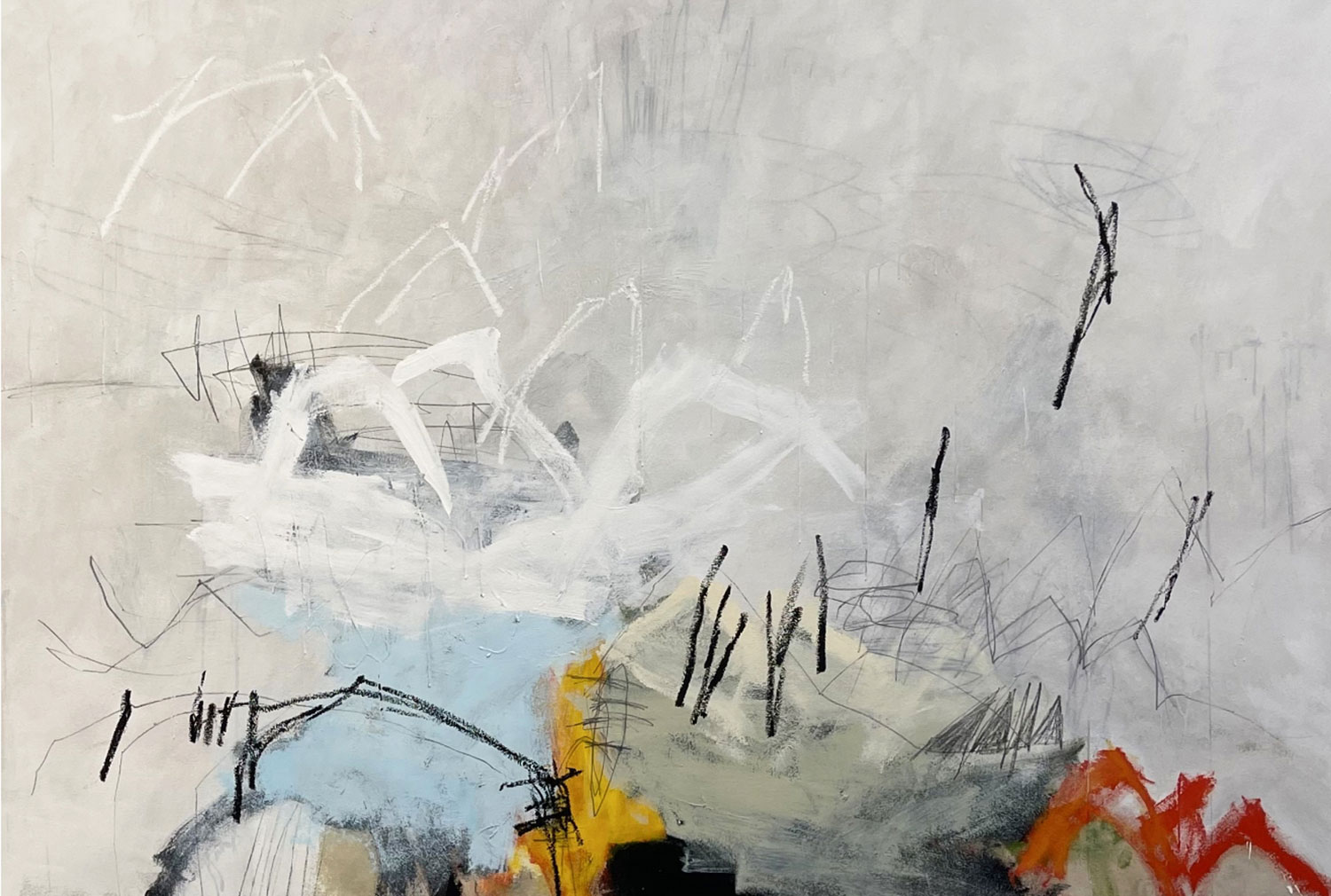
Q: It is often said that the best way to get know an artist is to observe their work. What do you think?
JC: Right, it’s a double-edged thing. So, there’s the work and then there’s the person. I guess it—again, observing work—if the work has enough validity to make you concerned or interested then maybe beyond that surface is where you decide knowing the artist is another thing too?
Q: I agree with that, but what if I wasn’t observing your work and I’m observing your art? How would I get to know you as an artist? And you said it best when you had that little quote, the one you said you wouldn’t forget.
JC: The work is supposed to be like an invitation, right? To a conversation that really just involves the viewer more than it does me. So, what I really do as an artist is create an experience. The experience is what guides the viewer or the person experiencing stuff to get to know the language of an artist, right?
Q: Correct. You gave me a quote yesterday too from a movie about an artist.
JC: Oh yeah. The Van Gogh thing?
Q: Right, what was that called?
JC: The quote is “when somebody looks at my work, I want them to say, ‘that man feels deeply’”. So, to exude whatever the emotional or life content that I’m putting into something, if it actually comes through to anyone who views it as something that is valid or interesting or like “wow” or whatever. Interest, that’s what it is.
Q: This is going to be a tough one. I find that your works tell an emotional story. Do you think of them that way? Are your works an emotional story? Like, what are your works?
JC: 100%. My works are a reflection of me. Period.
Q: Can you tell me more?
JC: Nope. You know what I mean? That’s as good as that is.
Q: That’s a good response to that question.
JC: ThisiswhoIam.ThisiswhatIam.Thisis what I do. This is what I’ve lived for. This is what I continue to live for. It’s what I’ll die doing. It is this.
Q: That response right there is amazing. I’m going to ask you that question again. I find that your works tell an emotional story. Do you think of them that way?
JC: Yup. Well, so let’s go to that other spot that I was talking about. They are your story too. They are her story. They are their story. They are that guy’s story. They’re everybody’s story.
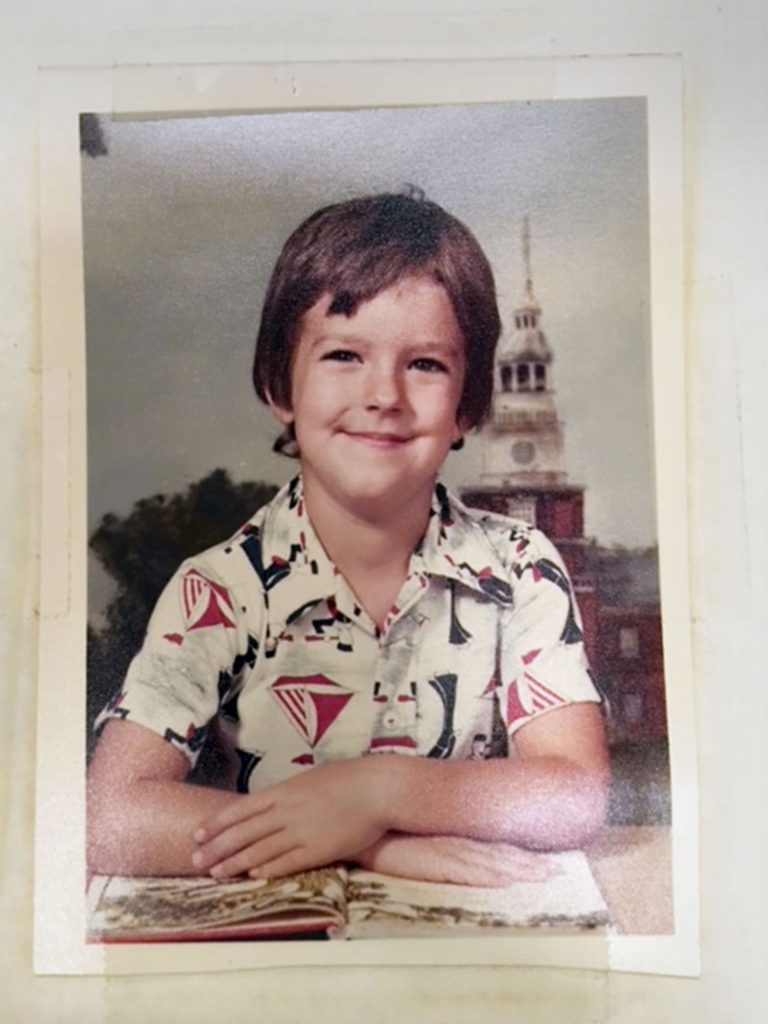
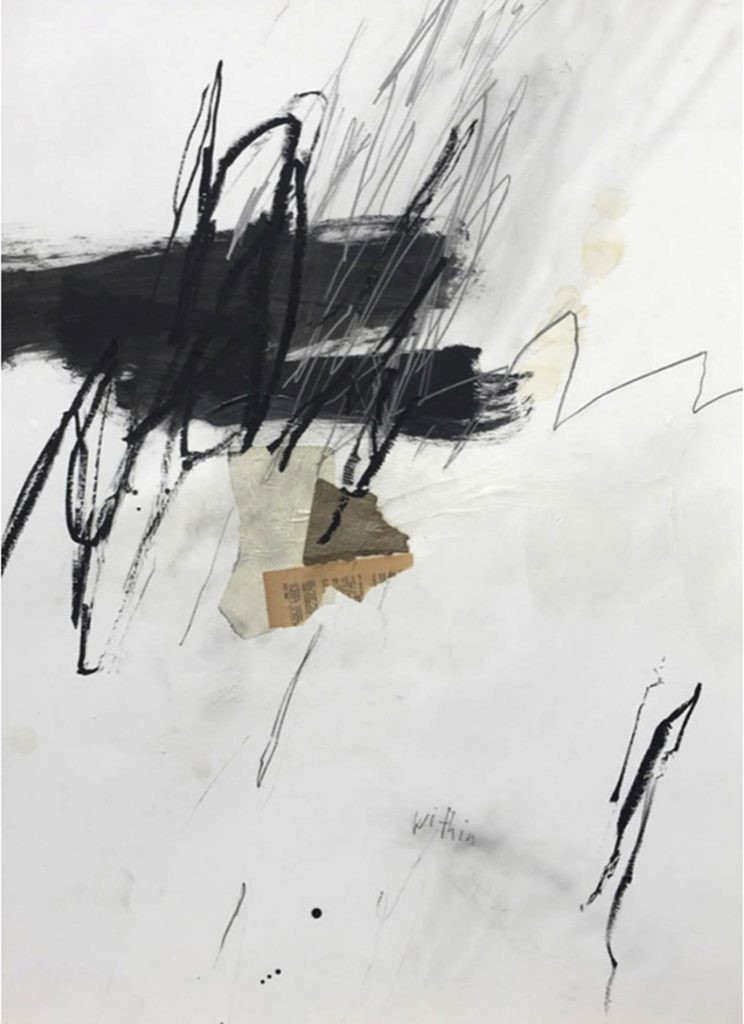
Q: That’s a story to me right there that I’m looking at.
JC: It’s just, well, the story is in the floor. I just did this the other night. I tore apart a thesaurus on the floor. This is all going in the next ten paintings. It’s information. It’s language. It’s everything. It’s everybody. It’s bigger than just one dude doing something. So yeah, it’s important in that way.
JC: Well, the entire thing is language, right?
Q: Let’s go back to question two that I asked you. I find that your works tell an emotional story. Do you think of them that way? Are they like a step of the soul toward something more tangible, more real? So, do you feel like you’re doing something more tangible and something more real? What is it you’re doing here?
JC: Well, as far as tangible and real, I think it just helps me feel real.
Q: Yeah, but—let me ask that again.
JC: That’s not a very good answer. Sorry.
Q: It is and it’s not. Are they like a step of the soul toward something more tangible, something more real?
JC: Well, of course—let’s go back to the same answer as before. They are a representation of me. This is not imagery. It’s something that maybe I do or don’t see, but I find in process. So by allowing the process, I find things. The answer is within exploration, right? Jump off the cliff or don’t.
Q: Alright, number four. What is more interesting to you, the original idea, the process, or the completion and seeing the finished work?
JC: The process.
Q: Why the process?
JC: Ideas are a thousand a second if you’re open to it. They’re always there. The imagery is always there. Anything is always there. It’s always there if you’re tuned. Right? So the process, the discussion, the argument between self and idea and how and blah, blah, blah—the depth of that space, being present in the presence of process, it’s far more important than what has ever happened before or whatever might happen. Whatever is happening is the most important thing period. What you can do is be present and be in process. That’s where it is. The process is where it is.
Q: So, number five. The process of preparing the canvas is part of the magic for each artist. What can you tell me about your preparation process? What is it like for you to lay out the canvas? What is it like for you when you start fresh from scratch? You should take a picture of this and send it to them.
JC: Pretty much all my work starts on the floor. And by starting on the floor, I am instantly bound to whatever accident and incident might happen as in dribbles, steps, walking on things. Anything, anything can happen. And it always allows me to be in a state of collaboration with what is already happening. It’s not the western— the western thought is like “I’m going to take this blank canvas and make a masterpiece because I’m a badass”. And eastern thought is more like “this canvas will allow me to participate and find what may or may not be beyond these moments of incident and accident. I’m not in control. I’m a participant.” So eastern philosophy is way more gentle and kind and has space and allowance for poetry and for things to evolve and be ambiguous. And suddenly things just show up. And you just allow it to come through.
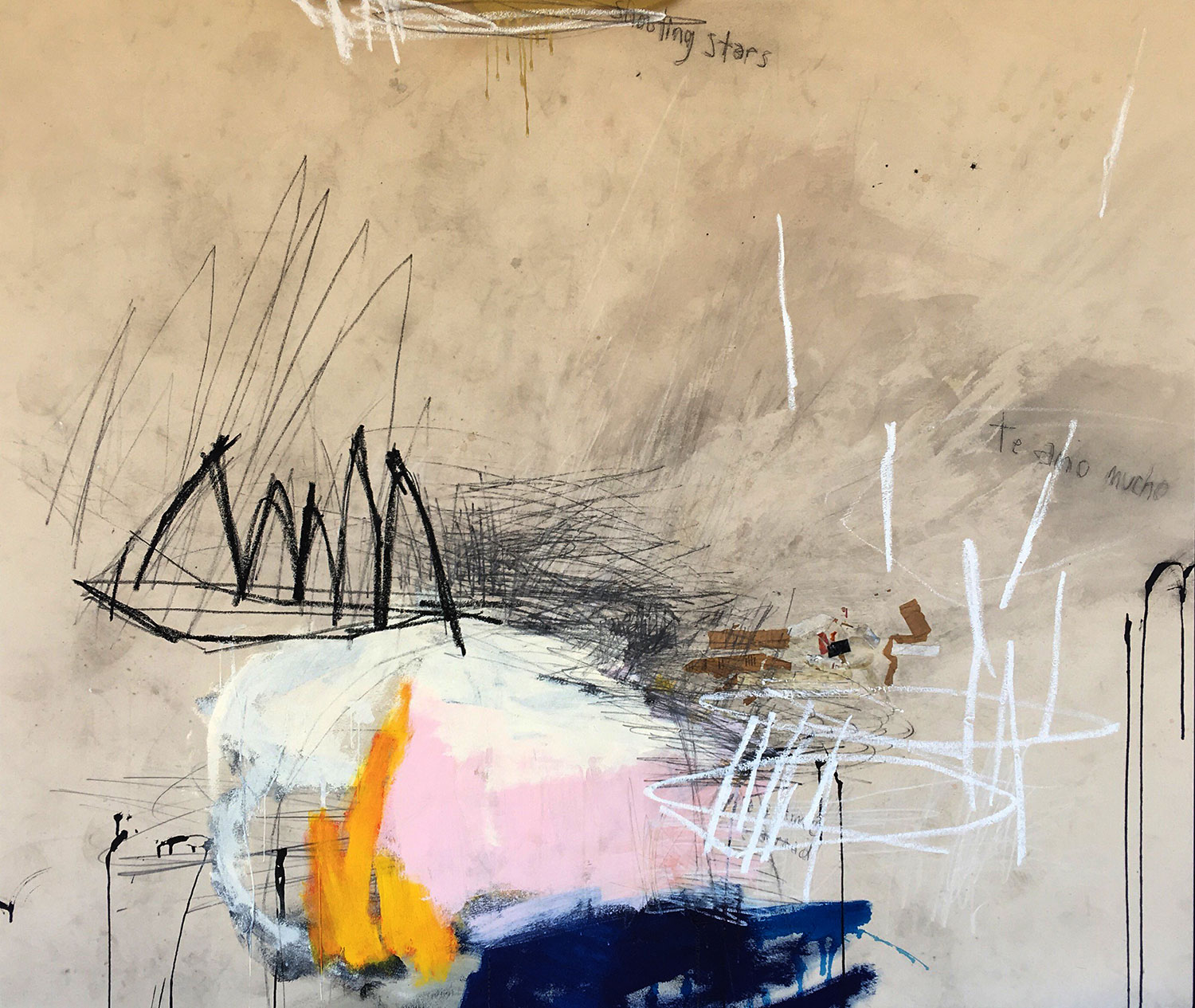
Q: Good response, man. I like that. Number six out of twelve. Does your work speak of your life, the lives of others, or of life in general? That’s a fucked-up question to ask somebody.
JC: A: my life personally. B: the entire collective of life and our experience in what we have created societally. We struggle and struggle and struggle and we all look for a thing to be comfortable blah, blah, blah. It’s that struggle. It’s about the struggle. The human struggle.
Q: So, do your works speak of your life, the lives of others, and everyone in general?
JC: Yes.
Q: So, you just collaborated everything into that?
JC: It’s all in the same boat. An easy comment is that I make all of this for me, but I’ve been really fortunate to have opportunities to share it with others and to be supported by others.
Q: Okay, so then get ready for this question. I like this question. And for this, do you listen to yourself, listen to others, or listen to the world in general? What motivates you? What’s your voice? You? Others? The world?
JC: To a certain extent, I am an egotistical, narcissistic fella who’s selfish enough to envelop his entire life with this shit. It would begin with me. And then it would be reflective of others. I don’t listen to music unless I get moved. I don’t enjoy reading or looking at something or even hanging out with anyone if I’m not moved. It’s about being moved. We are emotional creatures, whether it be… whatever it is in our world, but you can see it in everything else too. Like you see it in a cat every now and then, or a dog, in like the eyes. It’s just like you’re alive too in a space that we don’t understand, where language doesn’t exist. There’s a space where things happen, again, like we were talking about, between the viewer and the thing. The thing—we’ll call it a painting—the thing, the viewer, the space between viewer and the thing, you can’t define that shit. And that’s where everything happens.
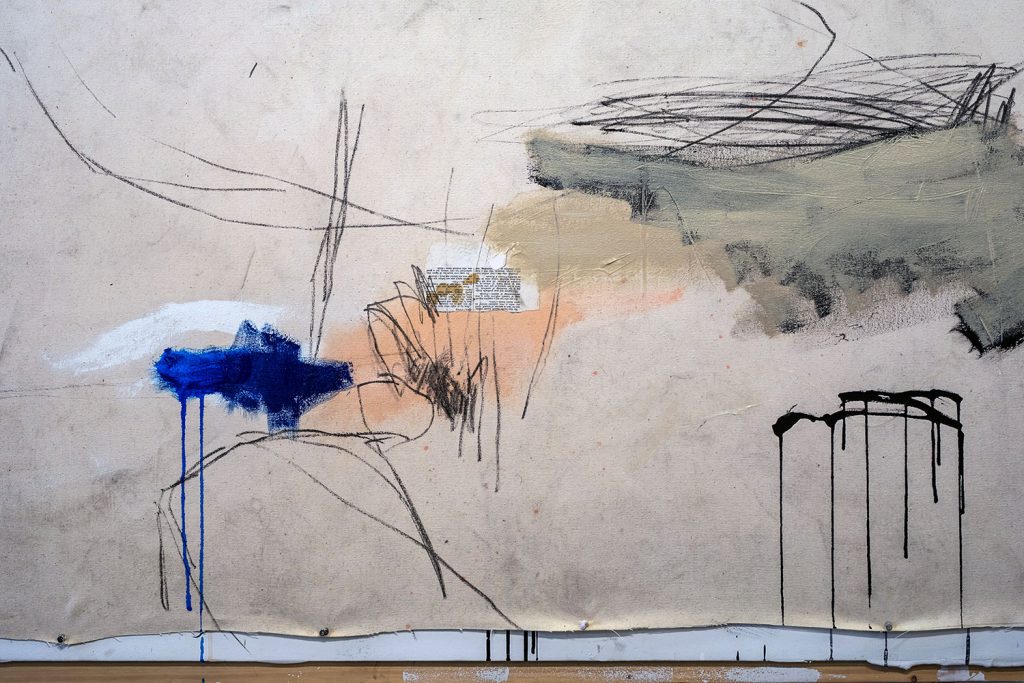
Q: So, within all that, what are you listening to? Are you just connecting to everything?
JC: Sure. I want to be whole enough to be connected to everything. But I am selfish enough to be wrapped up in myself and my own world. A constant struggle.
Q: So, the question deals with your artwork. What voices are you hearing? Who are you listening to? What are you tuning into? I think you just said that with everything. Your own emotions, your feelings, other people’s feelings, everything that’s—
JC: I don’t know. I tie everything I do to something that is relevant in some manner to myself, in some way.
Q: Good answer. Let’s move on. Alright, number eight. What defines an artist’s language or what do you think defines your own record? That’s a deep question.
Q: What defines an artist’s language? What defines your language?
JC: Philosophy. Things behind it. You can look and see that. It’s my work, because there’s a visual language. But there’s a philosophical , conceptual thing that’s going on all the time. And I think that’s the poetry of being a human being.
JC: Yeah. It’s ongoing. There is no one definition. There is no one statement.
Q: Let me ask you again now that we’ve had that discussion. What defines you as an artist?
JC: The fact that I’m an artist.
Q: My feelings? My emotions? The world?
JC: Sure. Yeah. I’m me.
Q: You are you. Honestly, what defines you as an artist and what do you think defines your own record? Your popularity, the popularity of your art? What do you think defines you? What defines you as an artist?
JC: You mean what do I think defines me? Or what would I hope would define me in the long run?
Q: They’re asking what defines an artist’s language or what do you think defines your own record. So, what defines an artist and what do you think from that defines you?
JC: Okay, depending on what we’re talking about, I love to see really great artists receive recognition for being so… whether it be showing at the biggest things or doing whatever, hitting museums, whatnot, just getting recognised for being amazing artists. In reflection on that, for me, I would like more of that. My highlight in my little world so far has been the show at The Contemporary Art Museum here in Raleigh, to walk into that room and look around like “I hold a museum”, it was pretty cool.
Q: What was the greatest pride of your life that you’ve done as an artist?
JC: It would be that so far, I think. I don’t know. I like, I’ve enjoyed a couple of times now walking into the art fair in Miami and there’s my work right there on the wall with all these people of so many levels. I’m showing internationally now and that’s very exciting.
Q: So, what do you spend your free time on when you are not working?
JC: Oh jeez. What do you think I do? Like I like to go out and eat, have drinks, have fun.
Q: No, but really, what do you like to do when you’re not painting your art, you’re not in your environment, you’re not in the headspace, what do you like to do?
JC: If we want to go big on the question, travel. Go see places. Find things. Have experiences that are not on your everyday plane. But, on the everyday plane, I like my life. I like my life, people around me that make me feel comfortable. Just living life.
Q: Number ten. I’ve always thought the simplest thing to do is know when a painting is finished. How do you know when your paintings are finished?
JC: When I stop arguing with myself.
Q: And what’s that argument about?
JC: Whether or not the painting is finished.
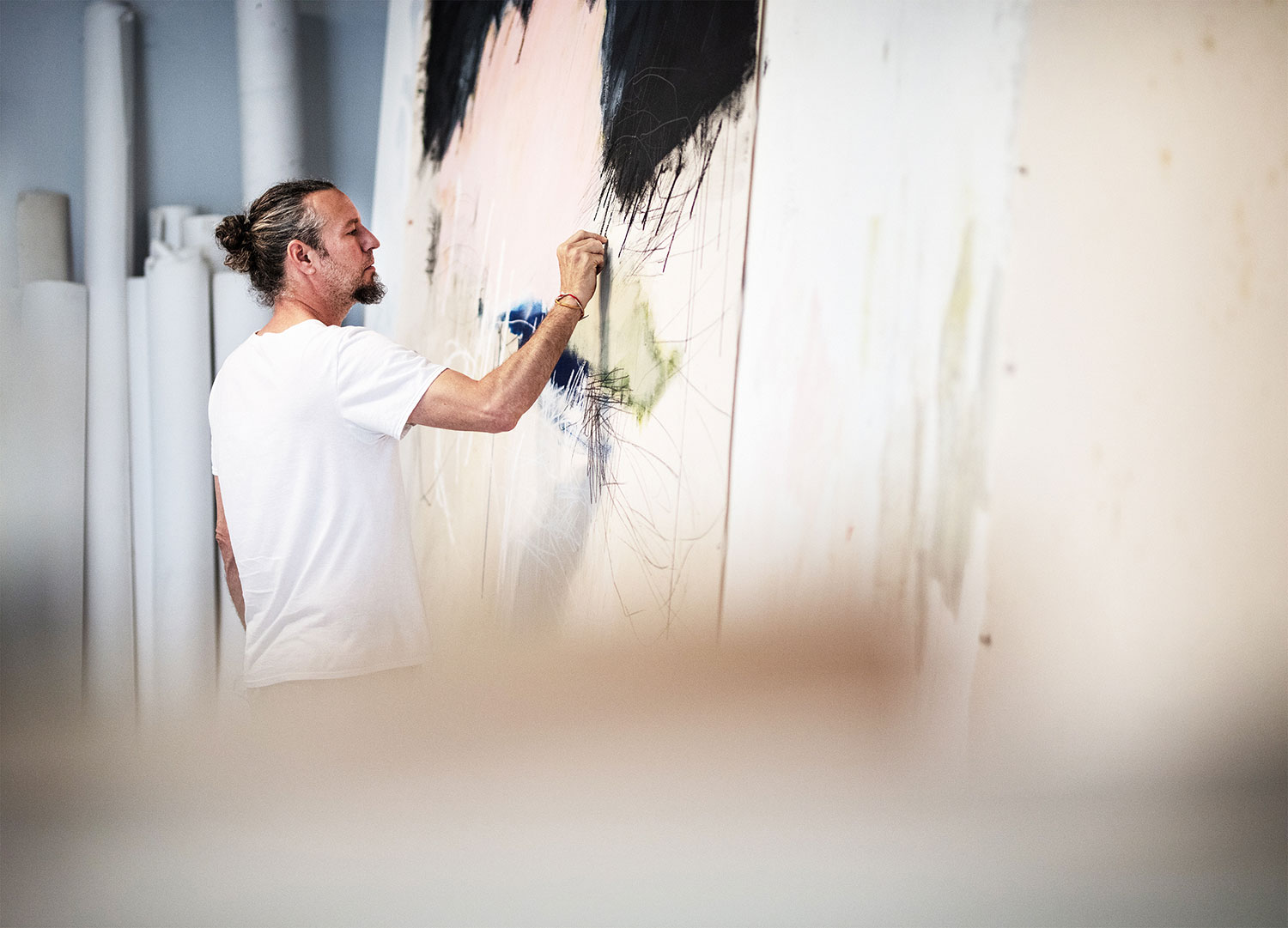
Q: There you go. It’s actually a good question.
Q: So, to answer the question in this article, how do you know when to stop? How do you know when it’s done? Does it tell you when it’s done? Do you tell it when it’s done? Are you just in that zone where like I just feel—
JC: It’s a perpetual collaboration. A work could be done by breathing on it. And it can be done by messing with it for months. It knows. We know. I know. We all know.
Q: It’s back to the collective experience.
JC: Yeah. It’s obviously done because it’s done.
Q: About your creative process, how have you seen it change in recent years? How have you changed as an artist Jason? When things first started happening and people were reaching out to you to where you are now.
JC: I guess if you wanted to really—I’ve matured
JC: Maturing.
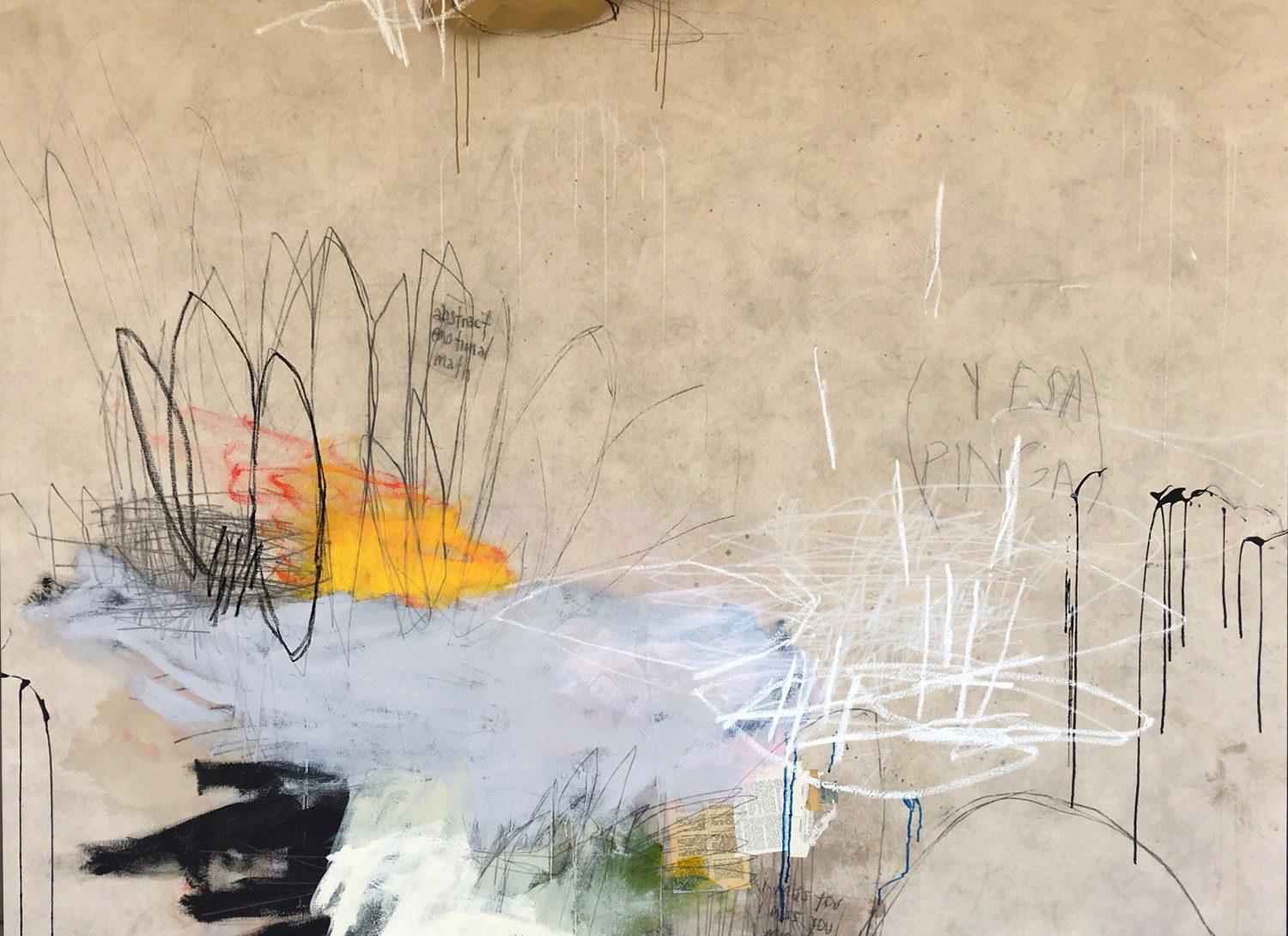
Q: The question was how have you seen yourself change in your creative process. Have you changed?
JC: Yeah, I think that’s where I’m going with this whole maturity thing. There’s a mature thing now where I’m like, “this is not happening today and it’s okay”, like it’s okay to walk away and breathe. Before, I was like, “I gotta stay all night until something happens. I have to force myself to be an artist and blah, blah, blah.” Now it’s like “oh wait. The hurry is worthless. It’s like you’re hurrying to what? Do you really want to hurry to the finish line? Or do you want to live your life and have this experience? And by having the experience, you just take your time, and it’s okay, and the work becomes better and better and better. The more you breathe, the better it is. The more you allow shit to happen versus like “I’m going to force this thing into existence”. You just allow it to happen.
Q: Last question. And then we’re going to go back through the questions again.
JC: Perfect. Good idea.
Q: Regardless of the aspects of the current market, if you could choose a work of art to have in your living room, which one would it be and why? Just one and why?
JC: It’s really hard to say, and they want you to say like one piece of art.
JC: I think I would want something really innocent like one of my nephew’s paintings.
Q: I like that.
JC: Something completely unbound by anything. And not even known by anything as recognise by anything. But literally to be that innocent. I think that’s what I would want.
Q: Alright, say that again. What’d you just say?
JC: I think that when an artist works from a place that they feel truly founded by, then whatever it is that they make has their language. If I stack up three coke cans, and you stack up three coke cans, we might be able to tell I stacked up these three, and you stacked up those three, just by inherent handling of the idea. Which I think inherently is artistic language.
Q: So how does that define you as an artist? It’s just the language? It’s the language?
JC: Yeah. The way I roll up these canvases, right now, and the way you would roll them up or whatever. Not that this is better, but it is mine.
Q: Okay, so number three again. Are they like a step of the soul toward something more tangible or something more real?
JC: No, no. I just got it! I just got it. Because the question is within, is it something that is— are you recording something or talking about something that everyone can attach to. That would be tangible. Something that is real is real to me. My space is real. That is real. This is real, but it’s not an image and it’s not tangible, because it lives within me. It’s my space.
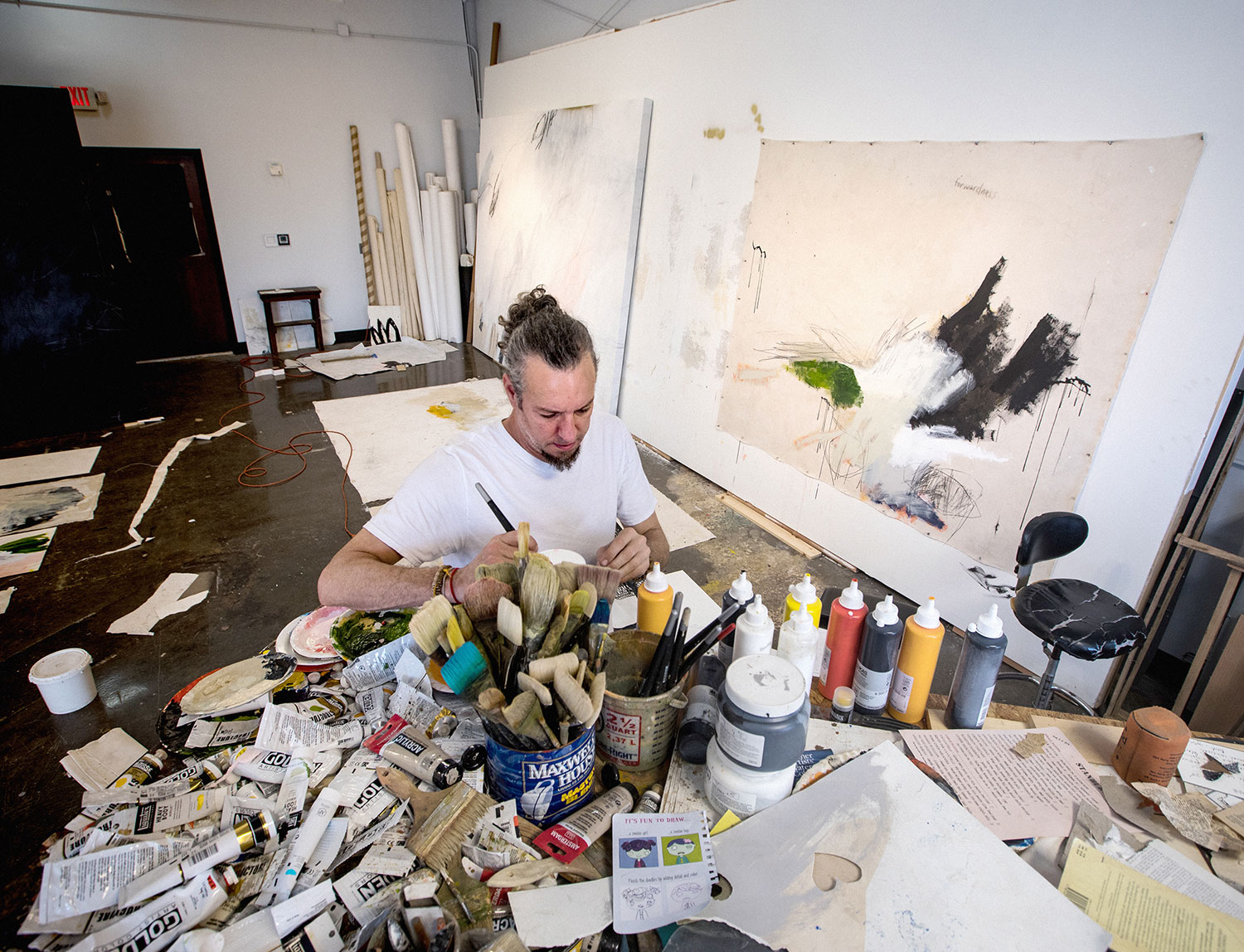
Q: What is more interesting for you? The original idea, the process, or the completion in seeing the finished work?
JC: It’s always the process. It is fascinating to see the finished work sometimes. Just to walk around and be like “damn, I made all this work! Neat.”
Q: About your creative process, how do you see how it has changed over the years?
JC: I think the only thing that’s changed is maturity in process. Rather than being more haphazard—
Q: Do you feel like you’ve gotten better or you’ve gotten more in tune with yourself?
JC: I’ve committed to this thing. Making art.
Q: Back to that question. How have you changed over the years? Do you feel like you’ve gotten better as a painter or gotten more in tune with yourself?
JC: I’m just more aware.
Q: Aware of what?
JC: Aware of the fact that something is happening in front of me versus “I’m going to make a painting”. I’m just more aware that all I have to do is talk to it and believe in it a little bit.
Q: I love that, man. That’s like when I start diving in my book. It’s just like, “woah, everything’s just happening on its own accord”.
JC: All the other parts stop, right? Like, you don’t think about where it’s headed. You don’t think about all the stuff that’s going to happen beyond. You don’t think about anybody experiencing it. You don’t think about anybody seeing it. You don’t think about anybody being a participant in it. It is literally just you and the thing. And that space, that’s the sacred space. Nobody touches that space. So, what you hope is that it comes through in whatever it is you’re doing in your process.
Q: Alright, well, I’m going to end this.
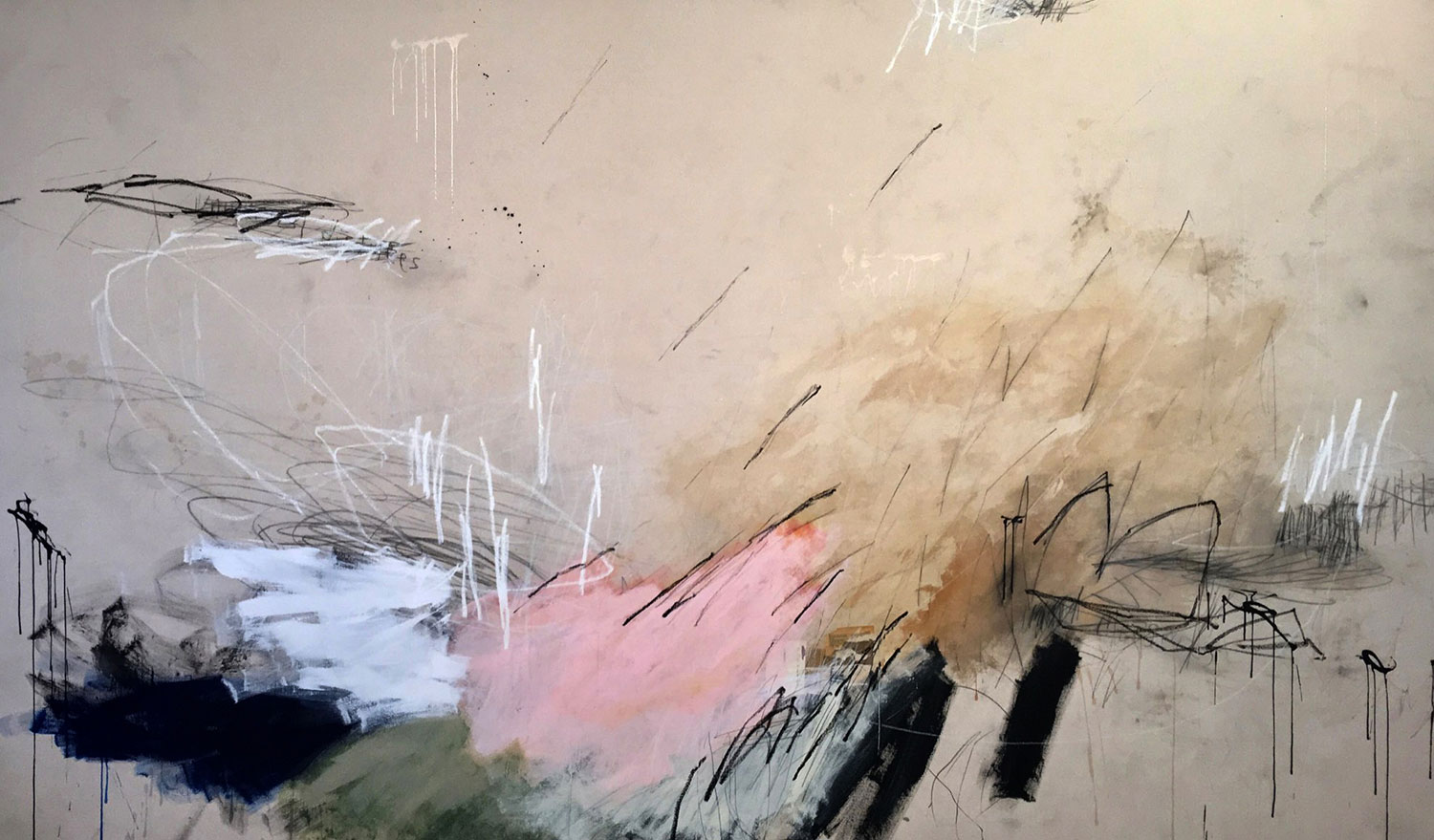
“I am fascinated by the way Jason’s works bring up emotions of calmness and unrest at the same time, with only a limited selection of elements, and also how he is able to incorporate drawing into painting so seamlessly. The raw, stripped-down aesthetic of his works speaks to me. I always look forward to seeing new works by him.”
Frej Forsblom. Makasiini Contemporary.
